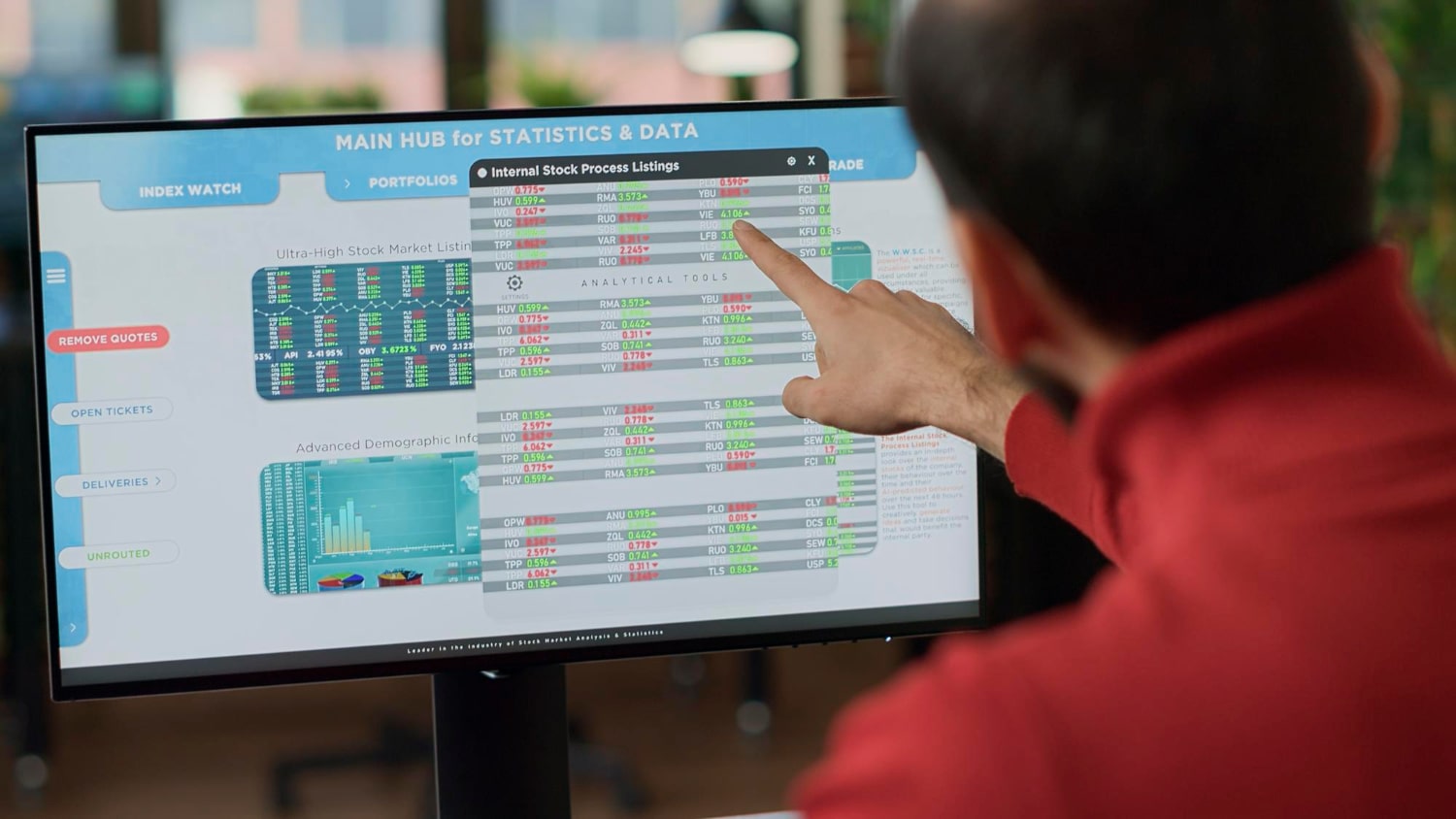Does your business management software allow you to hold negative inventory? You may think that’s a plus, and even some vendors sell it as such, but it’s actually a bad idea that often leads to major problems down the line. Don’t be sold on a solution that supports negative inventory. It is a short-term exception that can lead to long-term issues in inventory accuracy.
Negative inventory may feel like a reward at the moment, but it has a huge risk. It leads to unfulfilled orders, increased costs from overstocks, sales and service delays, and lost customers, just to name a few. Something that looks appealing on the outside, and instead, opt for software with inventory management that won’t allow inventory to go negative in the system.
What Is Negative Inventory?
Negative inventory refers to a situation where the recorded inventory levels in an accounting system are less than the actual physical inventory on hand. This can occur when there are errors in recording inventory transactions such as sales, returns, or adjustments, or when there are delays in recording inventory movements.
Delays in recording inventory movements can have a significant impact on your brewery. It can lead to inaccurate inventory levels, which can result in stock outs or overstocks. Stockouts then lead to lost sales and dissatisfied customers, while overstocks tie up capital and can cause spoilage.
Understated inventory increases the cost of goods sold (COGS) because negative inventory often requires rush orders, expedited shipping, and other costly measures to try to make up for stockouts. But these aren’t the only problems that surface sooner or later.
Delayed inventory recording makes it difficult to identify and address issues in your supply chain. For example, if a supplier consistently delivers late, delays in recording inventory movements may mask the problem, making it difficult to address the root cause. In a survey conducted by Deloitte, 47% of respondents reported that they had experienced a supply chain disruption in the past year, and 38% of those disruptions were caused by inventory problems.
Delays in recording inventory movements can have far-reaching effects on any business, from customer satisfaction to financial reporting. It is essential to have accurate and timely inventory data to make informed business decisions and avoid downstream effects.
Why Would a Brewery Want to Maintain Negative Inventory?
While having an accurate inventory count benefits the entire business, those who allow negative inventory likely have yet to experience or calculate its downstream effects. Often, it’s a matter of timing. Brewers wear many hats, and brewery inventory management can be tedious and time-consuming, especially if it is not done properly.
Related: Tips for the Optimal Brewery Production Schedule
Inventory management is the process of overseeing and controlling the flow of goods from the manufacturer to the warehouse, and ultimately to the end consumer. It involves managing inventory levels, ordering and restocking products, and tracking the movement of goods in and out of the warehouse.
A good system keeps track of all the items in stock, monitors their levels, and makes sure that they are replenished when necessary. Inventory management can be done manually or using software systems.
Software That Allows Negative Inventory Isn’t Doing You Any Favors
Smaller breweries often use spreadsheets, and as they grow, realize they need something more efficient and accurate, especially if multiple people are documenting inventory adjustments. Unfortunately, some breweries choose software that allows them to maintain negative inventory in the system.
It could be they dislike having software that makes sure everything is accounted for because they may have been used to managing their inventory manually. Additionally, some small breweries may not fully understand the benefits of using inventory management software. They may view it as an unnecessary expense or believe that their current methods are sufficient. Quite often, it’s because they (wrongly) believe it slows down order fulfillment, and they feel a sense of urgency in taking care of customers.
Maintaining negative inventory may seem like a quick fix to a temporary problem. For example, if a brewery runs out of a certain ingredient, it may be tempting to enter a negative inventory to reflect that they are currently out of stock. However, this approach can lead to more significant problems down the line.
But quick fixes frequently backfire, causing confusion and inaccuracies in the accounting system. As a brewery owner, you must keep an accurate measure of inventory or risk errors in ordering, production, and sales, which can ultimately harm your business.
The Downstream Effects of Negative Inventory
Increased COGS and Poor Planning
Maintaining negative inventory in an accounting system can lead to a number of downstream effects. For example, it can result in inaccurate cost of goods sold (COGS) calculations, which can impact profitability and tax liabilities. Negative inventory can also cause problems with inventory replenishment and production planning, as the system may not accurately reflect the actual inventory levels on hand.
Poor Financial Decisions and Regulatory Issues
Then there are the confusion and errors in financial reporting. Even small inaccuracies can build up over time, skewing numbers and causing much larger and costlier problems down the line. Those seemingly harmless concessions will eventually show up. Not only will you not have an accurate picture of your financial health, but if your brewery reports negative inventory levels on your balance sheet, it can raise questions from investors and auditors about the accuracy of your financial statements. The last thing you have time for is to have regulatory agencies breathing down your back and threatening costly investigations and penalties.
Stockouts and Overstocks
While companies with negative inventory are more likely to experience stockouts, there are also risks associated with overproduction. If your brewmaster sees there is negative inventory for a particular ingredient, they may assume that they need to produce more beer to use up the remaining stock. However, this can contribute to excess inventory and waste if the negative inventory is caused by inaccurate accounting.
Without accurate inventory data, it’s almost impossible to track costs accurately, ultimately harming your brewery’s bottom line.
The Benefits of Maintaining Accurate Inventory Levels
Maintaining accurate inventory levels allows you and your team to have a clear understanding of stock levels at any given time. This helps you avoid stockouts and overstocking, which can lead to lost sales and increased storage costs.
Accurate inventory levels also enable you to make informed purchasing decisions. By knowing exactly how much inventory you have on hand, you and your team can avoid over-ordering or under-ordering, which can result in wasted resources or missed opportunities.
Related: Success Story: Iowa Brewing Co.
One of the biggest benefits of accurate inventory accounting is that it enables you to identify trends and patterns in your sales and purchasing behavior. Instead of blindly creating recipes that may or may not be a hit, you can make data-backed decisions about which recipes are selling the most and which aren’t, which products to stock, when to order, and how much to order for each location you serve.
Any software product that allows you to not account for everything is only setting you up for headaches and even failure. By having a clear understanding of your inventory levels, you can accurately calculate your cost of goods sold, track your profitability, and make informed decisions about pricing, promotions, and expansion.
Ultimately, maintaining accurate inventory levels improves customer satisfaction. When your brewery has the right data, you can create winning brews at the lowest possible cost, keep products your customers want in stock, and fulfill orders quickly and efficiently. Data accuracy is the secret sauce that leads to consistent brewing, happier, more loyal customers and market growth.
The Role of Software in Maintaining Accurate Inventory Levels
With the help of brewery management software like Ekos which includes inventory management, you can streamline processes and feel more confident about your decisions and the health of your brewery. Leverage it to maintain accurate inventory levels with real-time tracking and monitoring of inventory levels. With the use of automated systems, you can accurately track the movement of inventory from the moment it enters your facility until it is sold or consumed. You’ll have a clear picture of your inventory levels at all times and can make informed decisions about when to reorder supplies or adjust production schedules.
Our software also helps breweries maintain accurate inventory levels by providing real-time visibility into supply chain operations. You can monitor the movement of raw materials and finished products throughout the supply chain, making it easier and faster to identify potential bottlenecks or delays so you can make adjustments to production schedules or inventory levels accordingly.
Proper inventory management is crucial for the success of any business, ensuring the right products are available at the right time, and helps prevent stockouts and overstocking. This can lead to increased customer satisfaction, reduced waste, and ultimately, higher profits.
Security in Numbers: How Ekos Protects Your Brewery’s Bottom Line
Overall, maintaining negative inventory in an accounting system is a bad idea because it can lead to a range of downstream effects that can impact your profitability, financial reporting, and regulatory compliance. At Ekos, our primary goal is to help craft brewers be more successful.
We deliberately built our brewery management system with inventory management that won’t allow inventory to go negative. As long as you and your team enter inventory data correctly and at the time of use, you will avoid negative inventory and all of the associated risks.
Ekos is a single brewery management system with the features brewers need to see exactly what’s going on across the entire business. From COGS, supply chain management and batch production to inventory & asset management and sales, you’ll have comprehensive, accessible data you can trust. With your entire team working together in Ekos, everything is documented for TTB reporting, you have access to the data you need at your fingertips, and you can plan with confidence. Learn more at Ekos.com.



